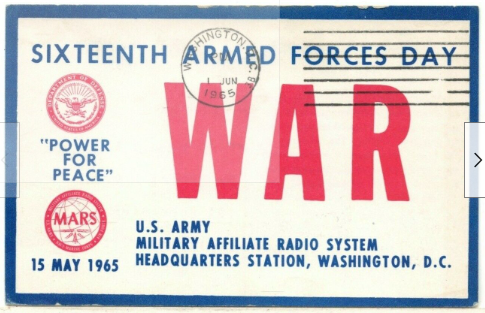 The Army, Air Force, Navy, Marine Corps, and Coast Guard are co-sponsoring the annual military/amateur radio communications tests in celebration of the 59th Anniversary of Armed Forces Day (AFD). Although the actual Armed Forces Day is celebrated on Saturday, May 16, 2009, the AFD Military/Amateur Crossband Communications Test will be conducted 09 May 2009 to prevent conflict with the Dayton Hamvention (15-17 May 2009), which is the same weekend as the actual Armed Forces Day.
The Army, Air Force, Navy, Marine Corps, and Coast Guard are co-sponsoring the annual military/amateur radio communications tests in celebration of the 59th Anniversary of Armed Forces Day (AFD). Although the actual Armed Forces Day is celebrated on Saturday, May 16, 2009, the AFD Military/Amateur Crossband Communications Test will be conducted 09 May 2009 to prevent conflict with the Dayton Hamvention (15-17 May 2009), which is the same weekend as the actual Armed Forces Day.
The annual celebration features traditional military to amateur cross band communications SSB voice tests and copying the Secretary of Defense message via digital modes. These tests give Amateur Radio operators and Short Wave Listeners (SWL) an opportunity to demonstrate their individual technical skills, and to receive recognition from the Secretary of Defense and/or the appropriate military radio station for their proven expertise. QSL cards will be provided to those stations making contact with the military stations. Special commemorative certificates will be awarded to anyone who receives and copies the digital Armed Forces Day message from the Secretary of Defense.
MILITARY-TO-AMATEUR CROSS BAND SSB & CW TEST CONTACTS.
Military-to-Amateur cross band operations will take place on the dates/times in ZULU (UTC), and frequencies listed below for each station. Voice contacts will include operations in single sideband voice (SSB). Some stations may not operate the entire period, depending on propagation and manning. Participating military stations will transmit on selected Military MARS frequencies and listen for amateur radio stations in the Amateur bands indicated below. The military station operator will announce the specific amateur band frequency being monitored. Duration of each voice contact should be limited to 1-2 minutes. The following stations will be transmitting on MARS frequencies listed below which are provided as “Window/Dial Frequency” in kHz.
Some stations will use CW to provide the opportunity to check in by Morse Code
Army Stations
STATION: AAZ (09 May 1400Z – 10 May 0300Z)
Frequency Emission Amateur Band
4038.9 kHz LSB 80M
6913.0 kHz LSB 40M
14.402.0 kHz USB 20M
13996.0 kHz USB 20M
18211.0 kHz USB 17M
7577.0 kHz CW 40M
13507.0kHz CW 20M
7639.5 kHz RTTY 40M
13512.5 kHz MT-63 20M
Location: Fort Huachuca, AZ
Address:
Commander NETCOM/9th ASC
ATTN: NETCOM-OPE-M (MARS) (31)
2133 Cushing Street
Ft. Huachuca, AZ 85616-7070
POC: Mr. Dewayne Smith
DSN: 821-7324
Commercial: (520) 533-7324
STATION: AAC (09 May 1300Z – 10 May 0100Z)
Frequency Emission Amateur Band
3348.5 kHz LSB 80M
7363.0 LSB 40M
9180.5 MT63 USB 30M
13910.5 kHz USB 20M
Location: Lexington, KY
Address:
HQ 1st BDE, 100th DIV (IT) MARS Station
Barrow Army Reserve Training Center
1051 Russell Cave Pike
Lexington, KY 40505
POC: Barry Jackson
Commercial: (859) 227-0137
STATION: ABH (09 May 1600Z – 10 May 2300Z)
Frequency Emission Amateur Band
3195 kHz LSB 80M
3360 kHz LSB 80M
4440 kHz LSB 80M
4466 kHz LSB 80M
7360 kHz LSB 40M
7720 kHz LSB 40M
8040 kHz LSB 40M
8094.5 kHz LSB 40M
14483.5 kHz USB 20M
14489.5 kHz USB 20M
17443.0 kHz USB 17M
17592.5 kHz USB 17M
20978.0 kHz USB 15M
20559.0 kHz USB 15M
Location: Schofield Barracks, HI
Commander, 396th Signal Company
30th Signal Battalion, 96857
POC: WO1 William Pemberton
Commercial: (808) 655-3387
STATION: ALM (09 May 1600Z – 10 May 2300Z)
Frequency Emission Amateur Band
13741.5 kHz USB 20M
4003.0kHz LSB 80M
7317.0 kHz LSB 40M
Location: Fort Wainwright
Commander, 507 the Sig Co, 99703
POC: CW4 Roderick Mitchell
507th Signal Company
Commercial: (907-353-0082
STATION: WAR (09 May 1200Z – 2400Z)
Frequency Emission Amateur Band
4020.9 kHz LSB/CW 80M
7504.0 kHz LSB/CW 40M
13512.5 kHz USB/CW 20M
20518.5 kHz USB/CW 15M
Location: Pentagon, Arlington VA
Address:
Pentagon ARC
PO Box 2322
Arlington VA 22202
POC CAPT Rick Low, USN
Station telephone:
Commercial: (703) 693-8423 DSN 223-8423
STATION: WUG-231 (09 May 1300Z – 10 May 0200Z)
Frequency Emission Amateur Band
4032.9 kHz LSB 80M
7.360.0 kHz LSB 40M
6.826.0 kHz LSB/CW 40M
14486.0 kHz USB 20M
14663.5 kHz USB/CW 20M
20973.5 kHz USB/CW 15M
Location: Memphis, TN
Address:
USACE Memphis District Office
ATTN: Jim Pogue
Public Affairs Office Room B-202
167 N. Main St.
Memphis, TN 38103-1894
POC: Mr. Jim Pogue
Commercial: (901) 544-4109
STATION: AAV (09 May 1300Z – 2000Z)
Frequency Emission Amateur Band
4038.9 kHz LSB 80M
7360.0 kHz LSB 40M
13963.5 kHz USB 20M
FORT MONMOUTH NJ
POC WILLIAM FITZSIMMONS
DIRECTOR REGION 2
N2LMU@JUNO.COM
Air Force Station
STATION: AIR (09 May 1200Z – 2400Z)
Frequency Emission Amateur Band
4517.1 kHz USB 80M
6996.1 kHz USB 40M
13985.1 kHz USB 20M
20737.6 kHz USB 15M
ROBERT WILLIAM STROH, A1C, SCORB, USAF
GLOBAL SYSTEM RADIO OPERATOR
89 CS/ 89 ASG
ANDREWS AFB, MD
DSN: 858-3109
COMM: 301-981-3109
STATION: AIR-2 (09 MAY 1200Z TO 2400Z)
Frequency Emission Amateur Band
4590.1 KHZ USB 80M
7540.1 KHZ USB 40M
13993.1 KHZ USB 20M
POC: Mr. AL EIERMANN
ADDRESS: AFCA / AF MARS
203W LOSEY ST
SCOTT AFB, IL 62225
COMMERCIAL: (618) 229-5963
Navy/Marine Corps Stations
STATION: NAV (09 MAY 1200Z – 09 MAY 2330Z)
FREQUENCY EMISSION AMATEUR BAND
4010.0 KHZ LSB 80M
7348.0 KHZ LSB 40M
14478.5 KHZ USB 20M
20994.0 KHZ USB 15M
ADDRESS: HQ NAVMARCORMARS RADIO STATION NAV CHEATHAM ANNEX BLDG. 117
108 SANDA AVE
WILLIAMSBURG, VA 23185-5830
POC: BO LINDFORS
COMMERCIAL: (757) 887-4494 DSN: 953-4494
STATION: NAV3 (09 MAY 1200Z – 10 MAY 0400Z)
FREQUENCY EMISSION AMATEUR BAND
4014.0 KHZ LSB 80M
7394.5 KHZ LSB 40M
13974.0 KHZ USB 20M
20997.0 KHZ USB 15M
ADDRESS: NAVMARCORMARS RADIO STATION NAV3
9035 OCEAN DR SUITE 3A
CORPUS CHRISTI, TX 78419-5234
POC: ITSC (SW) BROWN
COMMERCIAL: (361) 961-5002 DSN: 861-5002
STATION: NAV4 (09 MAY 1200Z – 10 MAY 0400Z)
FREQUENCY EMISSION AMATEUR BAND
4011.5 KHZ LSB/MT63 80M
7376.5 KHZ LSB 40M
14467.0 KHZ USB 20M
21758.5 KHZ USB 15M
ADDRESS: NAVMARCORMARS RADIO STATION NAV4
615 PREBLE AVE
CAMP BARRY, BLDG. 153
GREAT LAKES, IL 60088-2850
POC: ITC (SW/AW) STEPHEN ANDERSON
COMMERCIAL: (847) 688-3787 DSN: 792-3787
STATION: NBL (09 MAY 1200Z – 10 MAY 0400Z)
FREQUENCY EMISSION AMATEUR BAND
4041.5 KHZ LSB 80M
7371.5 KHZ LSB 40M
14391.5 KHZ USB 20M
20623.5 KHZ USB 15M
ADDRESS: NAVMARCORMARS RADIO STATION
4 LANTERN LANE
CHELMSFORD MA 01824-1316
POC: ROBERT VETH, DIRECTOR REGION ONE
COMMERCIAL: (978) 256-5264
STATION: NPL (09 MAY 1500Z – 10 MAY 0400Z)
FREQUENCY EMISSION AMATEUR BAND
4003.0 KHZ LSB 80M
7351.5 KHZ LSB 40M
14463.5 KHZ USB 20M
20936.0 KHZ USB 15M
ADDRESS: NAVMARCORMARS RADIO STATION
937 NORTH HARBOR DRIVE
SAN DIEGO, CA 92132-5100
POC: ITC (SW) TIGHE
COMMERCIAL: (619) 532-1490 DSN: 522-1490
STATION: NUW (09 MAY 1500Z – 10 MAY 0400Z)
FREQUENCY EMISSION AMATEUR BAND
4044.0 KHZ LSB 80M
7381.5 KHZ LSB 40M
13528.5 KHZ USB 20M
20952.5 KHZ USB 15M
ADDRESS: NAVMARCORMARS RADIO STATION
260 W. PIONEER FSC BLDG.
NAS WHIDBEY ISLAND, WA 98277
POC: MR. DIGGER O’DELL
COMMERCIAL: (360) 675-2823 DSN: 820-8038
PART II. SECRETARY OF DEFENSE MESSAGE TEST VIA DIGITAL MODES.
The Secretary of Defense message will be transmitted via digital modes including RTTY, PACTOR, AMTOR, PSK-31, MFSK and MT63 from the stations listed below, including frequencies, mode, and date/time in Zulu (UTC). All frequencies are listed for center of intelligence. Offset as appropriate for your TNC. Sound cards modes will use standard factory settings (Note: Not all stations may necessarily operate on all the frequencies listed, depending on propagation and available equipment.)
Army Stations
STATION: AAZ (HQ Army MARS and Western Area Gateway, Fort Huachuca, AZ)
Frequency Mode Broadcast Date/Time
6988.0 kHz RTTY 10 May/0110Z
PACTOR FEC 10 May/0130Z
MT63 10 May/0220Z
PSK-31 10 May/0250Z
14402.0 kHz RTTY 10 May/0110Z
PACTOR FEC 10 May/0130Z
MT63 10 May/0220Z
PSK-31 10 May0250Z
STATION: WAR (Pentagon MARS Station, Washington, DC )
Frequency Mode Broadcast Date/Time
6988.0 kHz Olivia 09 May/1700Z and 2300Z
MT63 09 May/1715Z and 2315Z
14440.0 kHz PACTOR FEC 09 MAY/1730Z
RTTY 09 MAY/1745Z
4020.9 kHz PACTOR FEC 09 MAY/2330Z
RTTY 09 May/2345Z
STATION: AAV
Frequency Mode Broadcast Date/Time
3243.5 kHz MT63 10May/0030Z
7358.5 kHz RTTY 10 May/0100Z
Air Force Stations
STATION: AIR-2 (Scott Air Force Base)
Frequency Mode Broadcast Date/Time
7831.1 kHz RTTY 09 May/1930Z
MT63 09 May/2030Z
MFSK 09 May/2100Z
14877.1 kHz RTTY 09 May/2130Z
MT63 09 May/2230Z
MFSK 09 May/2300Z
Navy/Marine Corps Stations
STATION: NAV (HQ NAVMARCORMARS RADIO STATION, WILLIAMSBURG, VA)
FREQUENCY MODE BROADCAST DATE/TIME
7346.5 KHZ RTTY 75 BAUD 09 MAY/2340Z
AMTOR FEC 10 MAY/0010Z
MT63 10 MAY/0040Z
14480.0 KHZ RTTY 75 BAUD 09 MAY/2340Z
AMTOR FEC 10 MAY/0010Z
MT63 10 MAY/0040Z
STATION: NAV3 (NAVMARCORMARS RADIO STATION, CORPUS CHRISTI, TX)
FREQUENCY MODE BROADCAST DATE/TIME
7393.0 KHZ RTTY 09 MAY/2340Z
AMTOR FEC 10 MAY/0010Z
MT63 10 MAY/0040Z
13975.5 KHZ RTTY 09 MAY/2340Z
AMTOR FEC 10 MAY/0010Z
MT63 10 MAY/0040Z
STATION: NAV4 (NAVMARCORMARS RADIO STATION, GREAT LAKES, IL)
FREQUENCY MODE BROADCAST DATE/TIME
7375.0 KHZ RTTY 10 MAY/0240Z
AMTOR FEC 10 MAY/0310Z
MT63 10 MAY/0340Z
14468.5 KHZ RTTY 10 MAY/0240Z
AMTOR FEC 10 MAY/0310Z
MT63 10 MAY/0340Z
STATION: NBL (NAVMARCORMARS RADIO STATION, GROTON, CT)
FREQUENCY MODE BROADCAST DATE/TIME
7370.0 KHZ RTTY 09 MAY/2340Z
PACTOR FEC 10 MAY/0010Z
AMTOR FEC 10 MAY/0040Z
14393.0 KHZ RTTY 09 MAY/2340Z
PACTOR FEC 10 MAY/0010Z
AMTOR FEC 10 MAY/0040Z
STATION: NPL (NAVMARCORMARS RADIO STATION, SAN DIEGO, CA)
FREQUENCY MODE BROADCAST DATE/TIME
7350.0 KHZ RTTY 10 MAY/0240Z
PACTOR FEC 10 MAY/0310Z
AMTOR FEC 10 MAY/0340Z
14465.0 KHZ RTTY 10 MAY/0240Z
PACTOR FEC 10 MAY/0310Z
AMTOR FEC 10 MAY/0340Z
STATION: NUW (NAVMARCORMARS RADIO STATION, NAS WHIDBEY ISLAND, WA)
FREQUENCY MODE BROADCAST DATE/TIME
7380.0 KHZ RTTY 10 MAY/0240Z
PACTOR FEC 10 MAY/0310Z
AMTOR FEC 10 MAY/0340Z
13530.0 KHZ RTTY 10 MAY/0240Z
PACTOR FEC 10 MAY/0310Z
AMTOR FEC 10 MAY/0340Z
SUBMISSION OF SECRETARY OF DEFENSE TEST MESSAGE ENTRIES.
Transcripts of the RTTY, PACTOR, AMTOR, PSK-31, MFSK and MT63 receiving test should be submitted “as received”. No attempt should be made to correct possible transmission errors. Provide time, frequency and call sign of the military station copied, including name, call sign, and address (including ZIP code) of individual submitting the entry. Ensure this information is placed on the paper containing the test message. Each year a large number of acceptable entries are received with insufficient information, or necessary information was not attached to the transcriptions and was separated, thereby precluding issuance of a certificate. Entries must be sent to the appropriate military address as follows:
a. Stations copying Secretary of Defense message transmitted from AAZ/WAR/AAV send entries to:
Armed Forces Day Celebration
Commander NETCOM/9th ASC
Armed Forces Day Celebration
Attn: NETC-OPE-MA (MARS) (31)
Fort Huachuca, AZ 85613-5000
b STATIONS COPYING SECRETARY OF DEFENSE MESSAGE TRANSMITTED FROM
NAV, NAV-3, NAV-4, NBL, NPL OR NUW SEND ENTRIES TO:
ARMED FORCES DAY CELEBRATION
CHIEF, NAVY-MARINE CORPS MARS
CHEATHAM ANNEX BLDG 117
108 SANDA AVE
WILLIAMSBURG, VA 23185-5830
c. Stations copying Secretary of Defense message transmitted from AIR-2 send entries to:
Armed Forces Day Celebration
AFCA / Chief, AF MARS
203W Losey St
Scott AFB, IL 62225
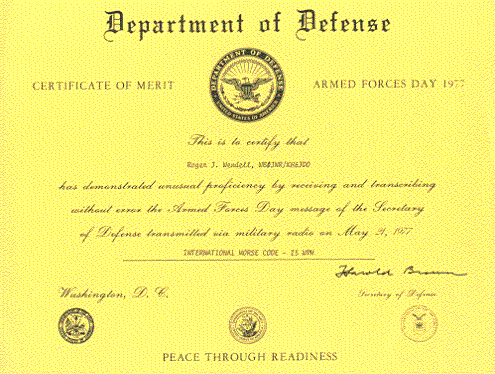

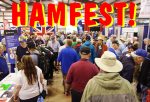 I went to the
I went to the  Yesterday, the weather was great and I got a chance to take my daughter out on a bicycle ride again. Wanting to improve the TX capability of my bike-mounted TH-D7A for APRS, I built an
Yesterday, the weather was great and I got a chance to take my daughter out on a bicycle ride again. Wanting to improve the TX capability of my bike-mounted TH-D7A for APRS, I built an 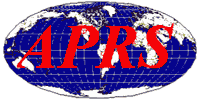 I have been doing a little more reading on APRS (when I should be working on homework). One item that I found very intriguing was CQSRVR. There is a good run down of that feature
I have been doing a little more reading on APRS (when I should be working on homework). One item that I found very intriguing was CQSRVR. There is a good run down of that feature 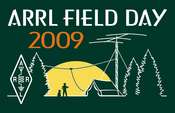 It is time to get ready for
It is time to get ready for 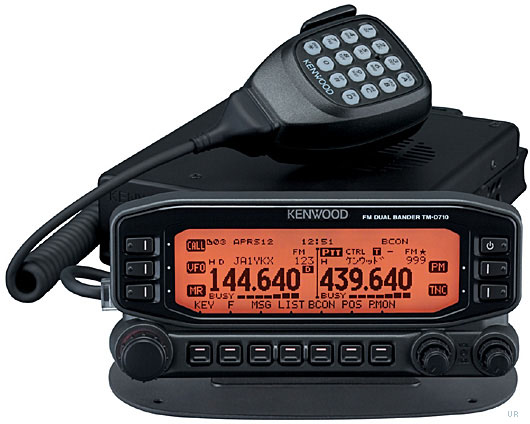
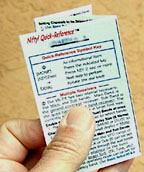
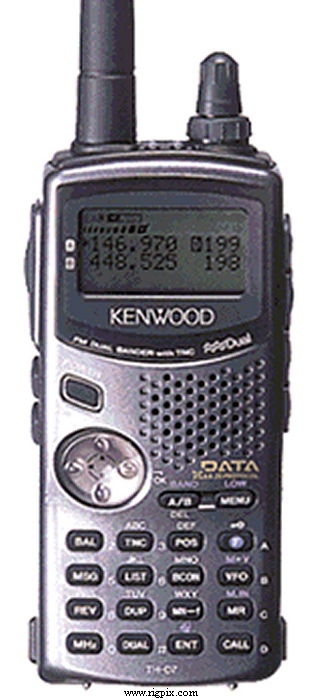 I eventually figured out how to set the tone and was on the repeater with the other folks. Then with a bit more thought and troubleshooting, I discovered my feedline connection to the rig had come loose and with that fixed I was back in business. Part of the problem is that I have a relatively new rig in the truck, the Kenwood TM-D710A. It is a very complicated rig and I have only scratched the surface on how to operate it. I was able to interface it with the Garmin Nuvi 350 thanks to a cable from
I eventually figured out how to set the tone and was on the repeater with the other folks. Then with a bit more thought and troubleshooting, I discovered my feedline connection to the rig had come loose and with that fixed I was back in business. Part of the problem is that I have a relatively new rig in the truck, the Kenwood TM-D710A. It is a very complicated rig and I have only scratched the surface on how to operate it. I was able to interface it with the Garmin Nuvi 350 thanks to a cable from 
